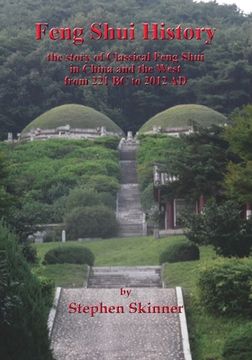Feng Shui History: the story of Classical Feng Shui in China and the West from 221 BC to 2012 AD (in English)
Synopsis "Feng Shui History: the story of Classical Feng Shui in China and the West from 221 BC to 2012 AD (in English)"
The History of Feng Shui tracks the evolution of feng shui in detail from China in 221 BC until the present day, both in China, and later in the West. This has never been done before in English. The only information on the history of feng shui occurs as scattered chapters in a number of books which often repeats the same vague and sometimes erroneous generalisations. These books include many erroneous statements such as:1."feng shui is 6000 years old." In fact the characters 'feng shui' were not used in this context before 320 CE. Even the older names (ti li, kan yu) for this practice do not occur in any texts before 220 BCE.2."feng shui derives from the Yi Jing." In fact, apart from the 8 trigrams being used as basic directional indicators, no feng shui compass shows 60 hexagrams till 1600 CE, and not the full 64 hexagrams till 1827 CE.3."the feng shui compass derives from a revolving magnetised spoon revolving on a plate." This incorrect deduction made by Wen Cheng To in 1946 (and later reluctantly repeated by Needham) was completely discredited in the 1990s, but people keep repeating it.This book has been meticulously researched, from authoritative Chinese texts and the analysis of many antique lo p'ans. It contains the details of many masters, and tracks the changes in theory and practice over time. There are modern chapters on feng shui in Singapore, Hong Kong, Taiwan, US and UK, bringing it totally up to date. Stephen Skinner introduced feng shui to the West with the first 20th century English book on feng shui in 1976. With the publication from 1998-2001 of the magazine "Feng Shui for Modern Living" in English and also in Chinese, Stephen has helped to spread interest in feng shui worldwide and outside of the Chinese speaking world. As interest has progressed further, there are now many more Westerners who not only know what traditional feng shui is, but also want to know how to use it practically.Feng shui is not a religion, but a discipline as precise in its practice as surveying, and more precise in its application and formulae than many Western sciences (such as psychology and sociology). Its history is therefore worthy of our attention. Stephen also documented the rings of the luopan in his comprehensive "Guide to the Feng Shui Compass: a Compendium of Classical Feng Shui." He has been a prime mover in both establishing feng shui as a precise discipline, and in bringing its benefits to the English speaking world.

